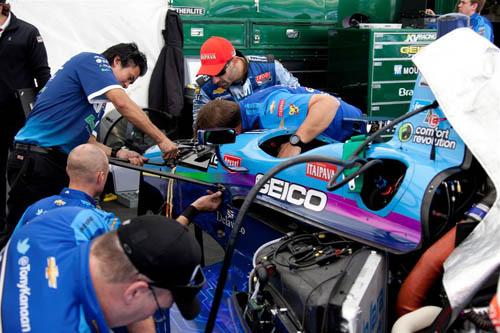Indy Electronics Drive Cars to Be Lighter & Faster
May 22, 2012

While 200mph speeds are not uncommon for IZOD IndyCar racers, their electronic systems are in many ways simpler than those found in many passenger cars designed for public highway speeds. After all, these vehicles do not need an extensive infotainment system, climate control, or security electronics.
But such cars do require specialization in those systems that are onboard to allow teams to optimize performance while maximizing safety. Trevor Knowles, director of engine development for IndyCar and an expert on their electronic systems, notes the difference between IndyCar electronics and those in passenger cars in that racecar electronics are more customized than those in passenger cars because of the unique requirements and lower production numbers.

Trevor Knowles told us:
Engine control units (ECUs) are designed to be frequently reprogrammed, while a road car unit would normally be sealed. IndyCar ECUs also have 1GB of logging memory, downloadable by CAT5 Ethernet connection. A road car ECU would probably have a lot less memory and it would be accessible only through special hardware.
He said racing teams have to measure many car parameters, not for control but for logging data in order to tune the chassis performance at a track.
Circuit protection in IndyCars also differs from that in passenger cars, according to Dan Woodie, data acquisition specialist at KV Racing Technology. He said that while road cars use fuses, relays, and breakers for protection (with spares needed for replacement in case of failure):
IndyCar electronics are protected by a PDU (power distribution unit) that monitors the current flow and will trip at a pre-set current limit to avoid damage to the (wiring) looms and other equipment. The PDU is remotely monitored, allowing engineers to see a problem before it becomes more serious.
In addition to current limiting, racing electronics need to present minimal hazard during an accident at speeds well above highway limits. "Electronic modules and looms are separated from the driver by Kevlar and carbon fiber panels. The battery, PDU, and other components are outside the driver's compartment," said Woodie. And a master switch accessible to safety crews can cut all electric power and trigger the fire suppression system.
About the Author(s)
You May Also Like


.jpg?width=300&auto=webp&quality=80&disable=upscale)


